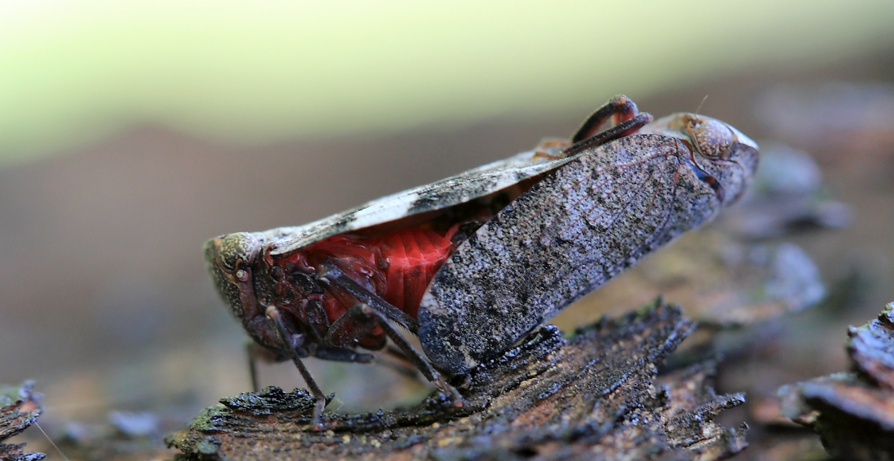Kamasutra: a new genus of insects from Australia with a particularly acrobatic mating behavior

One of our entomologists has described a new genus of insects from Australia with a particularly acrobatic mating behavior.
About twenty years ago, Jérôme Constant, an entomologist at the Institute of Natural Sciences, began to reexamine the Eurybrachidae, a family of insects belonging to the group of hemipterans, such as cicadas and bugs. They are difficult to find in nature—masters of camouflage—and therefore rare in natural history collections. During his revision, Jérôme found that this 'small' family of Eurybrachidae likely contains more than 500 species, of which at least 80% still need to be described.


Not one, but two...
These insects are not found in our region; they inhabit various habitats in Australia, South Asia, and Africa. In 2020, Australian nature photographer Colleen Foelz photographed specimens of Eurybrachidae on the trunks of eucalyptus trees in Queensland. Initially, she thought the insect was camouflaging itself with a 'false head' at the end of its wings. This type of camouflage, intended to impress or divert the attention of a predator, is even known in our region, for example, the 'eyes' on the wings of the peacock butterfly (Aglais io). Soon, Foelz realized that there were not one but two specimens in her photo, engaged in mating. To learn more about these insects, she contacted our colleague Jérôme.
Surprise! Jérôme had never seen such a mating behavior in this group of insects: the male hanging under the female, with his head at her abdomen. Normally, these insects mate side by side or back to back.

Ten new species
To identify these species, entomologists need to examine the genitalia of males, which differ from species to species. Colleen sent specimens to Jérôme, who immediately decided to reexamine this group of Eurybrachidae.
With specimens from natural history collections of Australian museums and material collected during expeditions in Queensland between 2019 and 2022, Jérôme Constant had a feast: he could describe ten new species. He grouped them into a new genus, which he named Kamabrachys. 'Kama,' from Kamasutra, of course, referring to the quite original and acrobatic mating position.
Masters of camouflage
In nature, Kamabrachys are very difficult to detect: their camouflage is on point. Their cryptic colors in shades of gray, black, and brown make them practically invisible on the trunks of eucalyptus trees. They are usually found in the grooves and crevices of the bark and even prefer partially burned trunks.
The specimens can move forward, backward, and sideways, and when they feel threatened, they remain facing the potential aggressor and retreat to the other side of the branch or trunk.
One of the new species, Kamabrachys waineri, was discovered in 2022 during an expedition in Chillagoe, funded by the Leopold III Fund. This happened in the same place where the new leafhopper species Cornutipo tricornis (the ‘triceratops’ leafhopper) was found: right next to the camping site where the biologists had set up their tents.
The study had been published in European Journal of Taxonomy.



